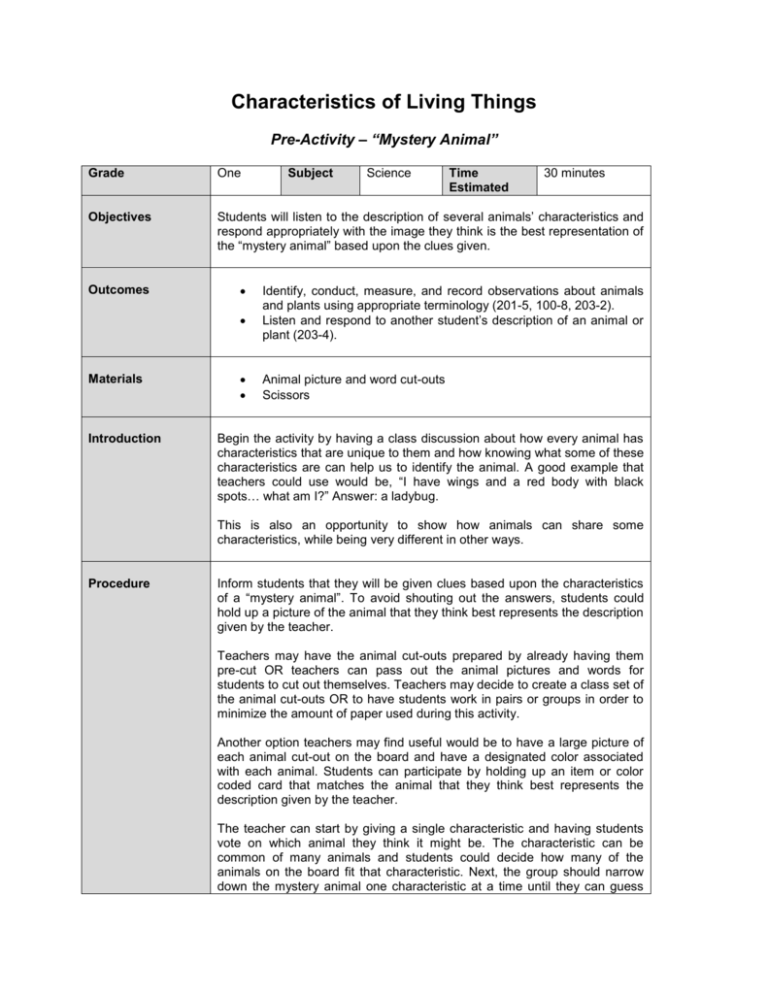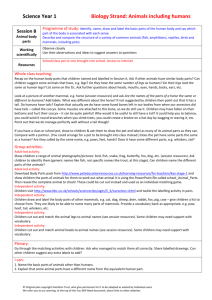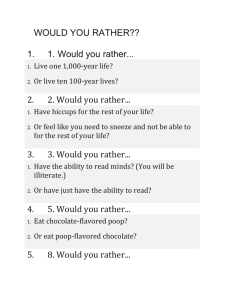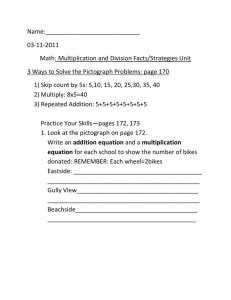Characteristics of Living Things Pre
advertisement

Characteristics of Living Things Pre-Activity – “Mystery Animal” Grade One Objectives Students will listen to the description of several animals’ characteristics and respond appropriately with the image they think is the best representation of the “mystery animal” based upon the clues given. Outcomes Materials Introduction Subject Science Time Estimated 30 minutes Identify, conduct, measure, and record observations about animals and plants using appropriate terminology (201-5, 100-8, 203-2). Listen and respond to another student’s description of an animal or plant (203-4). Animal picture and word cut-outs Scissors Begin the activity by having a class discussion about how every animal has characteristics that are unique to them and how knowing what some of these characteristics are can help us to identify the animal. A good example that teachers could use would be, “I have wings and a red body with black spots… what am I?” Answer: a ladybug. This is also an opportunity to show how animals can share some characteristics, while being very different in other ways. Procedure Inform students that they will be given clues based upon the characteristics of a “mystery animal”. To avoid shouting out the answers, students could hold up a picture of the animal that they think best represents the description given by the teacher. Teachers may have the animal cut-outs prepared by already having them pre-cut OR teachers can pass out the animal pictures and words for students to cut out themselves. Teachers may decide to create a class set of the animal cut-outs OR to have students work in pairs or groups in order to minimize the amount of paper used during this activity. Another option teachers may find useful would be to have a large picture of each animal cut-out on the board and have a designated color associated with each animal. Students can participate by holding up an item or color coded card that matches the animal that they think best represents the description given by the teacher. The teacher can start by giving a single characteristic and having students vote on which animal they think it might be. The characteristic can be common of many animals and students could decide how many of the animals on the board fit that characteristic. Next, the group should narrow down the mystery animal one characteristic at a time until they can guess the correct one, writing down the characteristics on the white board as they are mentioned. This can be done as statements from the teacher (the animal has brown fur, a long tail, black spots, etc.) or, for a more student-centered approach, questions from the students that gradually narrow down the field of choices. After each new characteristic is considered, students vote for the animal or animals that still fit the description. Introduction examples (to get students familiar with the activity): Dog: “I have four legs, a tail that wags, big ears, and I bark. What am I?” Cat: “I have four legs, whiskers, sharp claws, and I meow. What am I?” Goldfish: “I have a tail, scaly skin, big eyes, and gills. What am I?” The following are some characteristics that teachers can use for their “mystery animal” clues: Conclusion Cow: Four legs, fur, long tail, long ears, hooves, black spots. Bear: Four legs, short tail, long fur, sharp teeth, long snout, very large. Lobster: Hard shell, tail, more than four legs, claws, antennae, breaths underwater, small eyes. Bobcat: Four legs, thick fur, black spots, sharp claws, large ears, sharp teeth. Owl: Two legs, sharp claws, spotted feathers, big eyes, sharp beak, wings. Eagle: Two legs, dark feathers, wings, sharp claws, big eyes, sharp beak. Shark: Long tail, scaly skin, sharp teeth, breaths under water, no legs, small eyes, big mouth. Crocodile: Four legs, long tail, sharp teeth, scaly skin, small eyes, big mouth. Gecko: Small, four legs, scaly skin, tail, big eyes, long tongue, clawed toes. Butterfly: Small, more than four legs, wings, antennae, big eyes, long “tongue”. Have a class discussion about what other kinds of characteristics the animals have that could have been good clues to include in this activity.







